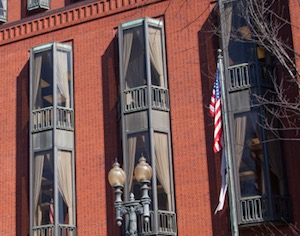 The Federal Circuit recently vacated and remanded a final written decision by the Patent Trial and Appeal Board (“Board”) holding that a petition for inter partes review was not time-barred under 35 U.S.C. § 315(b) and sanctions were warranted for failing to identify a real-party-in-interest. In vacating the Board’s decision, the Federal Circuit emphasized that there are no exceptions to the statutory time limit for filing a petition for inter partesreview in 35 U.S.C. § 315(b). Because the petition was filed more than 18 months after the statutory time limit, the Board lacked authority to institute reviewand issue a final written decision. Further, because the Board’s award of sanctions was not final, the Federal Circuit lacked jurisdiction to review the award and remanded for reconsideration by the Board. Bennett Regulator Guards, Inc. v. Atlanta Gas Light Co., Nos. 17-1555, 17-1626, 2018 U.S. App. LEXIS 27666 (Fed. Cir. Sept. 28, 2018) (Before Lourie, Clevenger, and Stoll, Circuit Judges) (Opinion for the Court by Stoll, Circuit Judge).
The Federal Circuit recently vacated and remanded a final written decision by the Patent Trial and Appeal Board (“Board”) holding that a petition for inter partes review was not time-barred under 35 U.S.C. § 315(b) and sanctions were warranted for failing to identify a real-party-in-interest. In vacating the Board’s decision, the Federal Circuit emphasized that there are no exceptions to the statutory time limit for filing a petition for inter partesreview in 35 U.S.C. § 315(b). Because the petition was filed more than 18 months after the statutory time limit, the Board lacked authority to institute reviewand issue a final written decision. Further, because the Board’s award of sanctions was not final, the Federal Circuit lacked jurisdiction to review the award and remanded for reconsideration by the Board. Bennett Regulator Guards, Inc. v. Atlanta Gas Light Co., Nos. 17-1555, 17-1626, 2018 U.S. App. LEXIS 27666 (Fed. Cir. Sept. 28, 2018) (Before Lourie, Clevenger, and Stoll, Circuit Judges) (Opinion for the Court by Stoll, Circuit Judge).
Bennett filed suit against Atlanta Gas Light (“AGL”) for infringement of the ?029 patent on July 18, 2012. AGL moved to dismiss the suit, and the district court granted the motion and dismissed the suit without prejudice in July 2013. Nearly two years later, in February 2015, AGL filed a petition for inter partes review of the ?029 patent. Bennett argued that the petition was time-barred under § 315(b), which prohibits filing a petition for inter partes review more than one year after the petitioner is served with a complaint forinfringement. The Board disagreed and instituted trial, holding that the district court’s dismissal of the infringement suit without prejudice effectively nullified service of the complaint.
After trial was instituted, but before the Board issued its final written decision, AGL’s parent company (AGL Resources, Inc.) merged with another company and changed its name. While AGL listed AGL Resources as a real-party-in-interest in the petition, it did not notify the Board of the merger and name change. The Board subsequently issued its final written decision finding all of the claims of the ?029 patent unpatentable without having any knowledge of the merger or the name change. Bennett notified the Board of the merger and name change shortly after receiving the final written decision and sought termination and monetary sanctions against AGL for its failure to disclose. The merger created a conflict for one of the Board judges, who recused himself after learning of it. A reconstituted panel heard the sanctions motion and authorized Bennett to move for “costs and fees” it incurred between the date of the Board’s final written decision and the Board’s grant of sanctions, but the panel declined to terminate the IPR.
Bennett appealed, arguing that the petition was time-barred by § 315(b) and, even if the petition was not time-barred, the Board erred in at least ten of its claim constructions and in its anticipation and obviousness findings. Bennett also appealed the Board’s decision to impose only monetary sanctions and to not issue terminating sanctions for AGL’s failure to disclose the merger and name change. AGL cross-appealed, arguing that the Board erred in awarding sanctions at all. The Board had not ruled on Bennett’s motion for costs and fees at the time the parties appealed.
The Federal Circuit first addressed Bennett’s argument that the Board erred in instituting review because AGL’s petition was time-barred by § 315(b), which prohibits the Board from instituting review if the petition is filed more than one year after the petitioner is served with a complaint alleging infringement. In a recent decision, the Federal Circuit held that filing a petition more than one year after the petitioner is served with a complaint alleging infringement implicates the time bar in § 315(b), regardless of whether the complaint is ultimately successful on the merits. See Click-to-Call Techs., LP v. Ingenio, Inc., 899 F.3d 1321, 1329-32 (Fed. Cir. 2018). The fact that Bennett’s complaint was involuntarily dismissed without prejudice—while the complaint in Click-to-Call was voluntarily dismissed—provided no reason to distinguish Click-to-Call and deviate from the general rule in § 315(b).
The Federal Circuit emphasized that:
[S]erving a complaint alleging infringement—an act unchanged by the complaint’s subsequent success or failure—unambiguously implicates § 315(b)’s time bar. . . . The statute endorses no exceptions for dismissed complaints . . . The statutory language clearly expresses that service of a complaint starts § 315(b)’s clock. . . . Just as the statute includes no exception for a voluntarily dismissed complaint, it includes no exception for an involuntarily dismissed complaint.
Accordingly, because Bennett served AGL with a complaint more than one year before AGL filed its petition for inter partesreview, the petition was time-barred and the Board had no authority to institute review in the first instance. The Federal Circuit vacated the final written decision and remanded for the Board to dismiss the IPR without addressing Bennett’s claim construction and unpatentability arguments.
The Federal Circuit next addressed Bennett’s argument that the Board erred by issuing only monetary sanctions and AGL’s argument that the Board erred by awarding sanctions at all. The Federal Circuit has jurisdiction to review final decisions of the Board, but it does not have jurisdiction to review non-decisions. While the Court may exercise pendantjurisdiction to review issues not properly before the Court that are “inextricably intertwined” with or necessary for the resolution of issues already before the Court, it does so only in rare cases. The Federal Circuit found that the parties’ disputes were not inextricably intertwined in the case:
The parties’ time-bar and merits disputes ask whether § 315(b) prohibits this IPR and whether the art identified by [AGL] anticipates or renders obvious Bennett’s properly construed claims. In contrast, the parties’ challenges to the Board’s sanctions order implicate the Board’s power to issue sanctions and to accept late filings. . . and ask us to examine whether the Board erred by identifying [AGL]’s parent company as a real party in interest . . . . ‘[T]he finding of invalidity and the sanctions in the present case have different legal bases requiring different legal analyses.’
The Federal Circuit rejected AGL’s argument that the Board’s decision to deny terminating sanctions was a final decision reviewable by the Court, noting that to accept that argument would require the Court to “arbitrarily divide the Board’s sanctions order into two decisions—one relating to termination and one relating to a monetary award.” Because the Board’s sanctions order was not final and the time-bar and sanctions issues were not inextricably intertwined, the Federal Circuit lacked jurisdiction to review the order and remanded for the Board to consider the award in light of the Court’s decision to dismiss the IPR under § 315(b).
Take Away
The time-bar for filing a petition for inter partes review in Section 315(b) begins to run as soon as a complaint for infringement is served in district court, regardless of whether the complaint is involuntarily or voluntarily dismissed or is ultimately successful on the merits. There are no exceptions to the statutory time limit for filing a petition for inter partes review in 35 U.S.C. § 315(b).

![[IPWatchdog Logo]](https://ipwatchdog.com/wp-content/themes/IPWatchdog%20-%202023/assets/images/temp/logo-small@2x.png)



![[Advertisement]](https://ipwatchdog.com/wp-content/uploads/2024/04/Patent-Litigation-Masters-2024-sidebar-early-bird-ends-Apr-21-last-chance-700x500-1.jpg)

![[Advertisement]](https://ipwatchdog.com/wp-content/uploads/2021/12/WEBINAR-336-x-280-px.png)
![[Advertisement]](https://ipwatchdog.com/wp-content/uploads/2021/12/2021-Patent-Practice-on-Demand-recorded-Feb-2021-336-x-280.jpg)
![[Advertisement]](https://ipwatchdog.com/wp-content/uploads/2021/12/Ad-4-The-Invent-Patent-System™.png)







Join the Discussion
No comments yet.